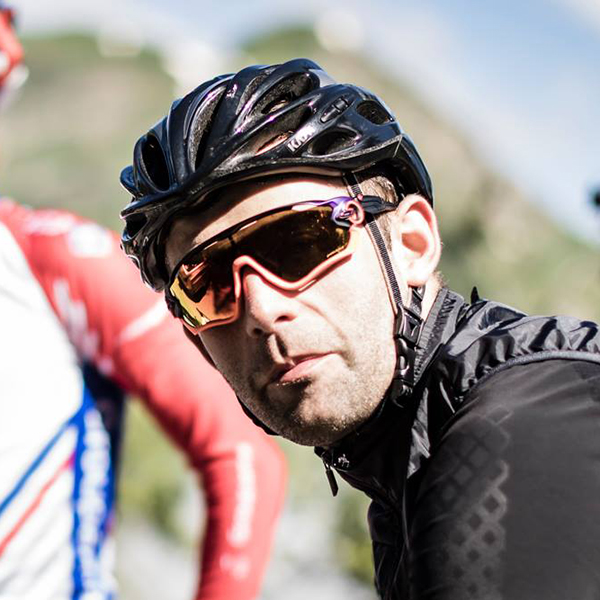In the summer of 2023, Specialized launched the Tarmac SL8, updating one of the most successful – and highly rated – race bikes on the UCI WorldTour.
A year prior to that, Canyon had refreshed the Ultimate, which is also one of the most well-regarded race bikes in the world.
Both are pitched to deliver top-tier race performance, and neither is designed to be out of reach of mere mortals who want to ride a fast race bike. However, each bike goes about that aim a little differently.
Here, while acknowledging what the brands say about their own bikes, I’ve taken a long hard look at both in order to help you decide which is the best one for you.
My conclusion? The Specialized S-Works Tarmac SL8 is probably the faster race bike of these two, but there are certainly caveats that make the bottom line far less clear.
Introducing the bikes
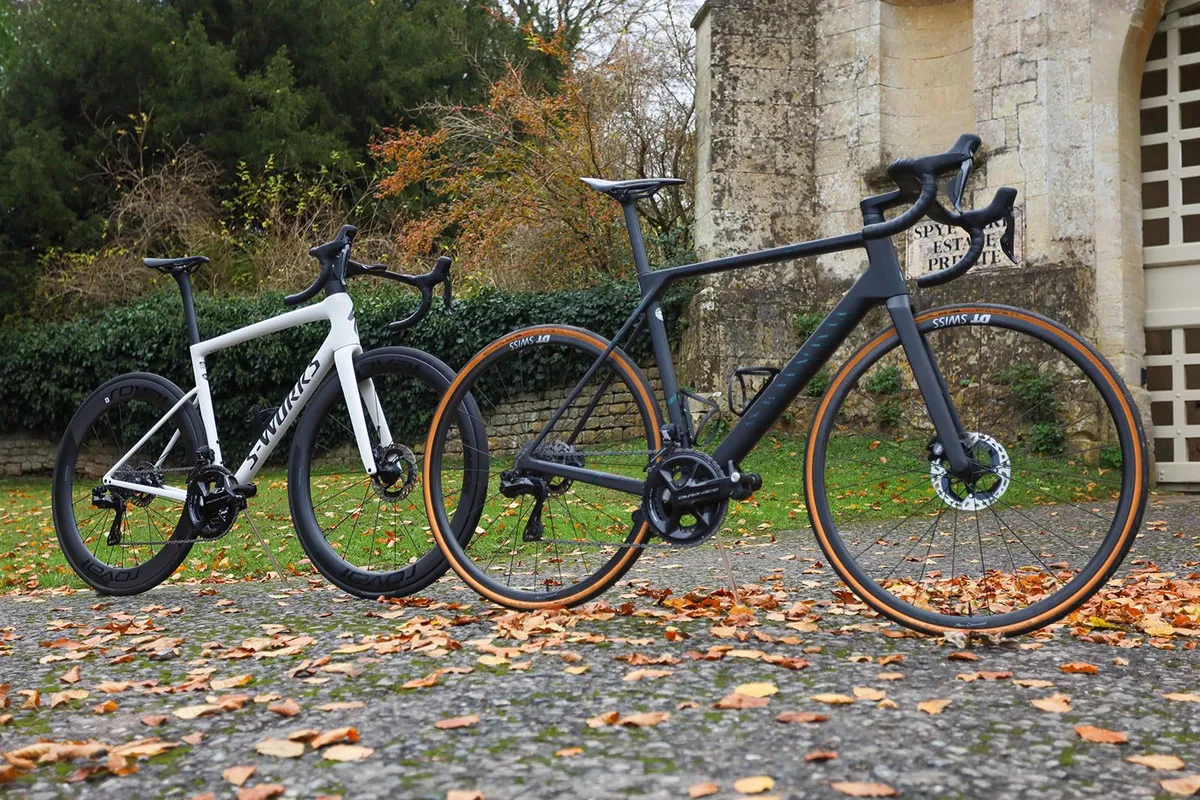
These are so-called all-round race bikes, designed to excel everywhere.
Both have racy silhouettes, and top-spec carbon constructions and builds, yet both are underpinned by more affordable models, which people are far more likely to be able to afford.
Largely irrespective of which model falls within your budget, turn up at your local club ride, and your friends are going to know you’re riding one of the most covetable road bikes in the world.
But while there are certainly similarities between them, there are key differences to note too. One might be considered a true all-rounder, the other a little more focused.
Specialized S-Works Tarmac SL8

The Tarmac SL8 is ostensibly the only road race bike Specialized makes, combining aero and lightweight in one package. Not since the Venge has the brand offered a dedicated aero road bike.
Specialized also makes the Aethos, a lightweight climbing bike, but this is very rarely seen used by sponsored teams.
This year, Specialized evolved the Tarmac SL7 into the Tarmac SL8 and purposely split the new bike into two zones.

At the front, where there’s cleaner airflow, it installed the latest Roval Rapide one-piece cockpit, deepened the head tube by extending it forwards (as opposed to the usual fill-in approach) and modified the forward-facing tube surfaces.
The head tube design turned heads when it appeared in spy shots and at launch, but Specialized says this enabled it to keep the handling geometry exactly the same as the Tarmac SL7.
All that changed was an extra 10mm stack, required because of the spacers needed to fit the new cockpit.

Further back and in the areas where there’s more turbulent airflow, Specialized looked to the Aethos for inspiration.
The down tube, seat tube and stays are rounder than they used to be on the Tarmac SL7, which the brand says makes them more efficient at handling the torsional strain of a rider’s weight and pedalling forces.
This meant excess material – and therefore weight – could be shaved from the frame. As a result, the S-Works Tarmac SL8 frame, built with the brand’s top-of-the-range Fact 12r carbon, weighs a claimed 685g in a size 56cm.

More interestingly, especially for most of us unable or unwilling to part with £12,000 / $14,000 for a road bike, the less-expensive 10r frames (anything not badged ‘S-Works’) are said to weigh 780g – 20g less than the S-Works Tarmac SL7.
Overall, Specialized says the Tarmac SL8 is faster than the Venge, which it says is the fastest road bike it had ever made before this. It claims it would save a pro rider two minutes and eight seconds at Milan-San Remo, compared to riding a Tarmac SL7.
It’s fair to say these examples are extreme, though, and far more should factor into your buying decision.
| | 44 | 49 | 52 | 54 | 56 | 58 | 61 |
|---|---|---|---|---|---|---|---|
| Seat angle (degrees) | 75.5 | 75.5 | 74 | 74 | 73.5 | 73.5 | 73 |
| Head angle (degrees) | 70.5 | 71.75 | 72.5 | 73 | 73.5 | 73.5 | 74 |
| Chainstay (mm) | 410 | 410 | 410 | 410 | 410 | 410 | 410 |
| Seat tube (mm) | 433 | 445 | 456 | 473 | 494 | 515 | 545 |
| Top tube (mm) | 496 | 509 | 531 | 541 | 563 | 577 | 595 |
| Head tube (mm) | 99 | 109 | 120 | 137 | 157 | 184 | 204 |
| Fork offset (mm) | 47 | 47 | 47 | 44 | 44 | 44 | 44 |
| Trail (mm) | 71 | 63 | 58 | 58 | 55 | 55 | 52 |
| Bottom bracket drop (mm) | 74 | 74 | 74 | 72 | 72 | 72 | 72 |
| Bottom bracket height (mm) | 266 | 266 | 266 | 268 | 268 | 268 | 268 |
| Wheelbase (mm) | 970 | 973 | 975 | 978 | 991 | 1,006 | 1,013 |
| Standover (mm) | 723 | 735 | 746 | 768 | 786 | 808 | 834 |
| Stack (mm) | 501 | 514 | 527 | 544 | 565 | 591 | 612 |
| Reach (mm) | 366 | 375 | 380 | 384 | 395 | 402 | 408 |
| Crank length (mm) | 165 | 165 | 170 | 172.5 | 172.5 | 175 | 175 |
| Bar width (mm) | 380 | 380 | 400 | 420 | 420 | 440 | 440 |
| Stem length (mm) | 75 | 75 | 90 | 100 | 100 | 110 | 110 |
Canyon Ultimate CFR

The Canyon Ultimate, on the other hand, is a little more focused on the lightweight side of things.
Canyon sees the Ultimate as the ‘genesis’ bike – the one that gave birth to the family of bikes that surround it, and continues to set the standard for future specialist bikes.
The Aeroad is the German brand’s dedicated aero bike, and is used interchangeably with the Ultimate in pro races, depending on the course and rider preference.
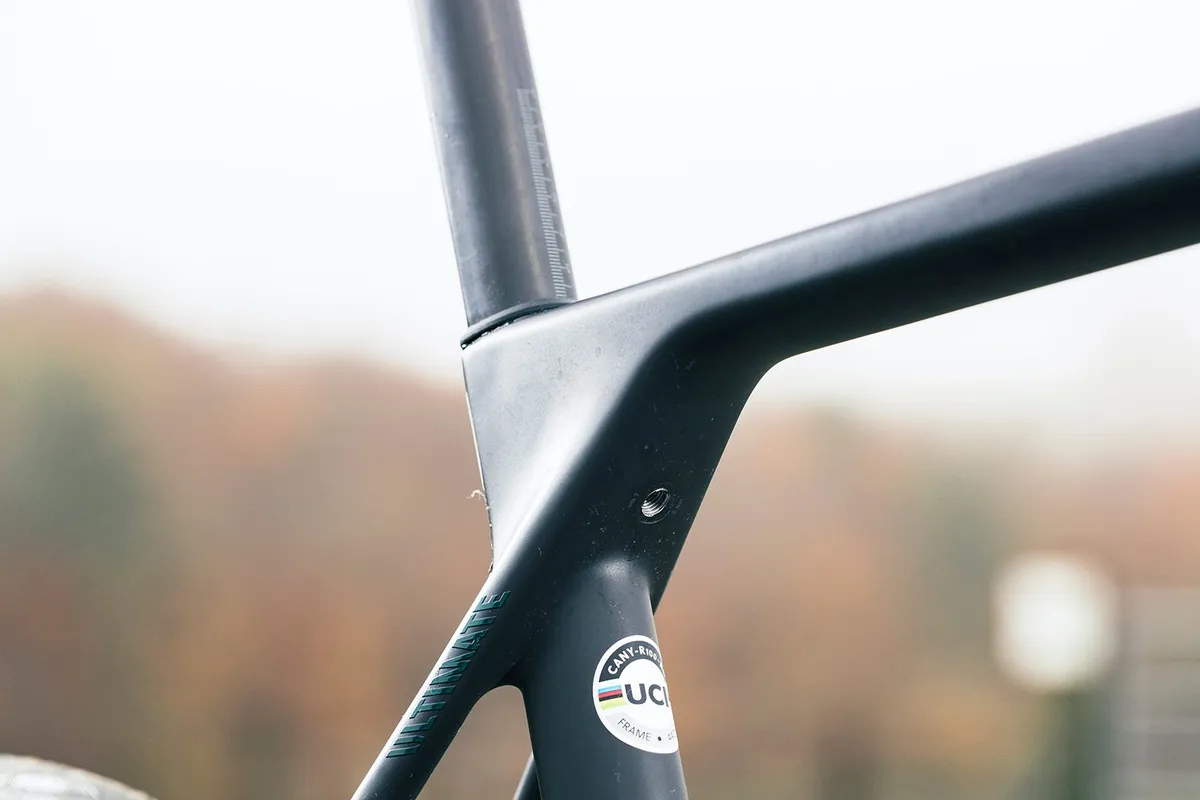
For the latest Ultimate, the German brand chose evolution over revolution.
It says the frame was subject to an aerodynamic overhaul that helped it save 5 watts at 45kph in the wind tunnel, but you needed to look hard to spot the difference.
Only then (and with the benefit of having a previous-generation Ultimate lined up next to it) could I really see the difference, before I noticed the tidied-up rear dropout.
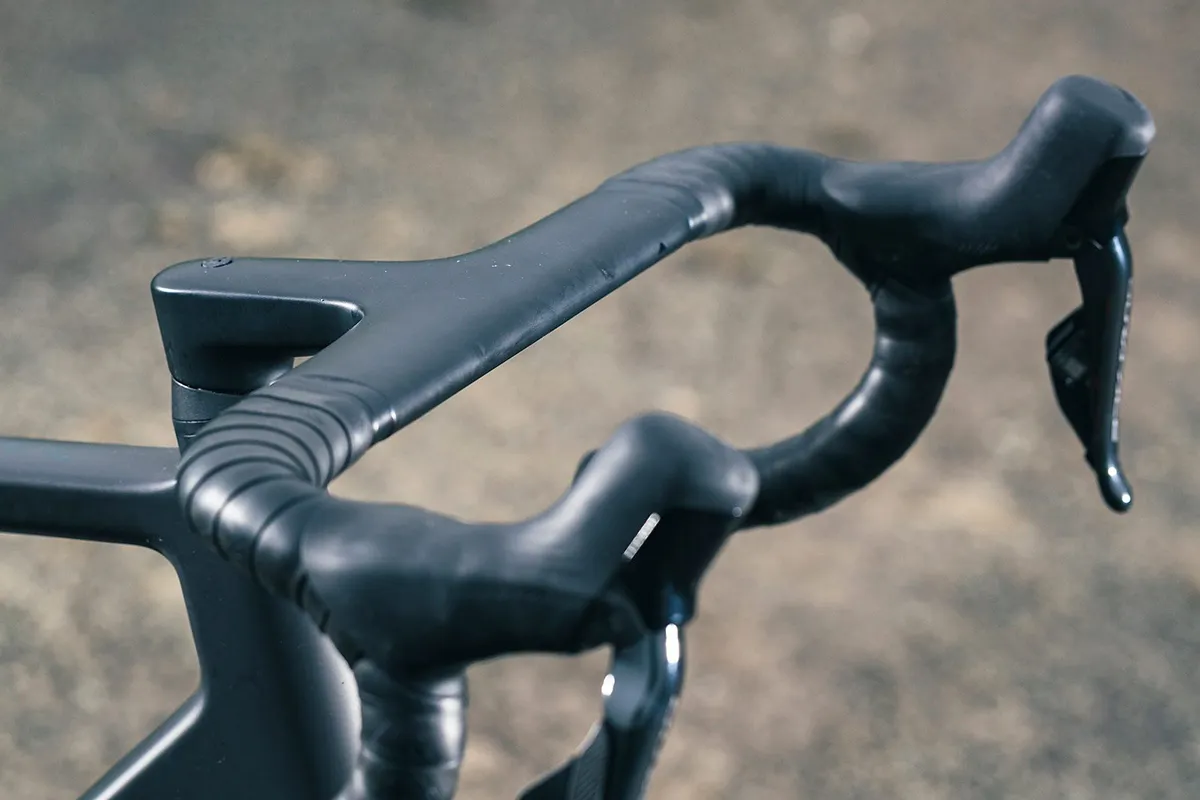
The width-adjustable Aerocockpit was also ported over from the Aeroad.
Nevertheless, the more straight-lined approach to frame design is clear, but there are fewer concessions to outright aerodynamic performance compared to the Tarmac SL8.
Canyon also took the step of increasing frame weight voluntarily by 30g – it said, to improve reliability and overall ride quality – while bumping up head tube stiffness by 15 per cent to help improve handling.
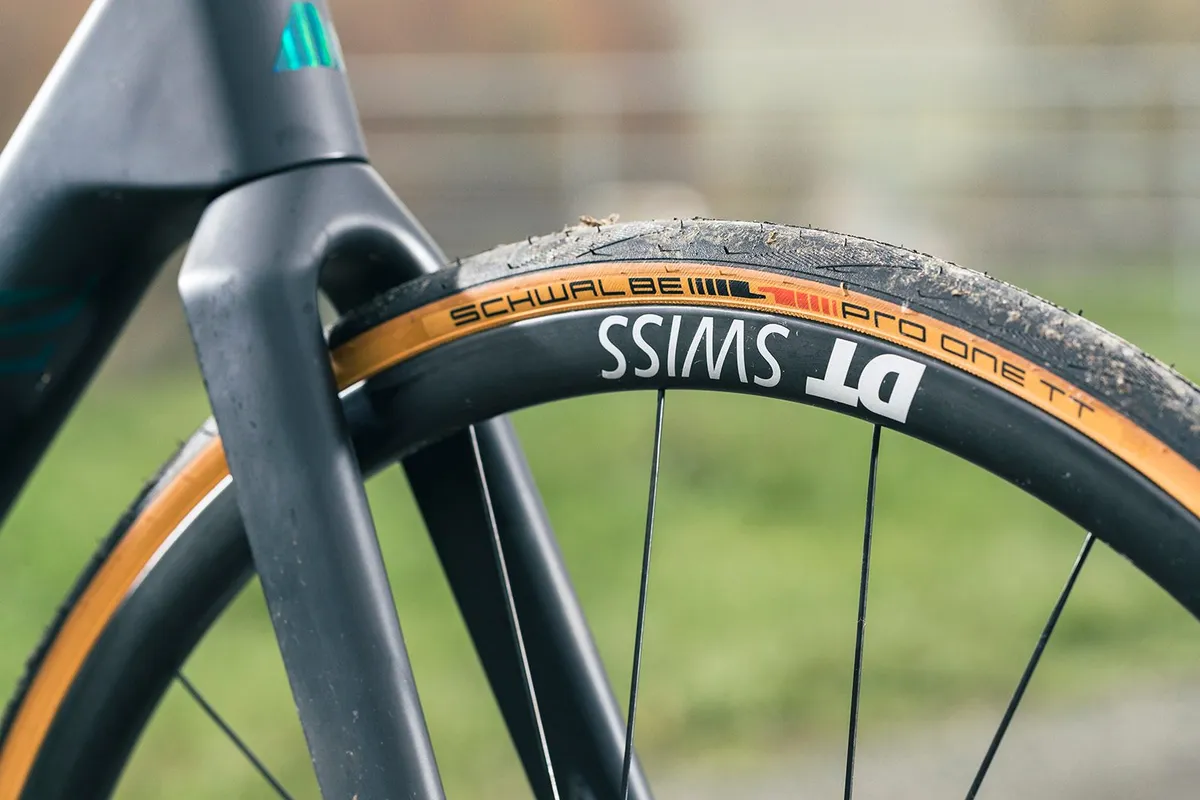
So, although visibly the less aerodynamically aggressive of the two bikes, the Ultimate CFR frame is claimed to weigh 762g in a size medium (a frame size roughly equivalent to a 56cm Tarmac SL8, in terms of stack and reach).
Although the Canyon Ultimate sizes up slightly compared to an equivalent Tarmac SL8, the CFR frame is 77g more than an S-Works Tarmac SL8 frame, and only 18g lighter than Specialized’s second-tier layup.
|  | XXS | XS | S | M | L | XL | XXL |
|---|---|---|---|---|---|---|---|
| Seat angle (degrees) | 73.5 | 73.5 | 73.5 | 73.5 | 73.5 | 73.5 | 73.5 |
| Head angle (degrees) | 71.5 | 71.2 | 72.75 | 73.25 | 73.25 | 73.5 | 73.75 |
| Chainstay (mm) | 405 | 410 | 410 | 410 | 413 | 415 | 415 |
| Seat tube (mm) | 420 | 450 | 480 | 510 | 540 | 570 | 600 |
| Top tube (mm) | 524 | 537 | 554 | 564 | 577 | 603 | 619 |
| Head tube (mm) | 115 | 107 | 121 | 142 | 162 | 188 | 206 |
| Wheelbase (mm) | 965 | 979 | 982 | 988 | 1,003 | 1,029 | 1,042 |
| Stack (mm) | 501 | 523 | 542 | 563 | 583 | 609 | 627 |
| Reach (mm) | 372 | 378 | 390 | 393 | 401 | 419 | 429 |
| STR | 1.35 | 1.38 | 1.39 | 1.43 | 1.46 | 1.45 | 1.46 |
| Spacers (mm) | 15 | 15 | 15 | 15 | 15 | 15 | 15 |
| Stem (mm) | 80 | 90 | 90 | 100 | 110 | 110 | 120 |
| Handlebar width (mm) | 390 +/- 20 | 390 +/- 20 | 390 +/- 20 | 410 +/- 20 | 410 +/- 20 | 410 +/- 20 | 410 +/- 20 |
| Crank arm length (mm) | 170 | 170 | 172.5 | 172.5 | 175 | 175 | 175 |
| Seatpost length (mm) | 316 | 316 | 316 | 316 | 316 | 316 | 316 |
| Wheel size (mm) | 700c | 700c | 700c | 700c | 700c | 700c | 700c |
Specialized S-Works Tarmac SL8 vs Canyon Ultimate CFR specifications
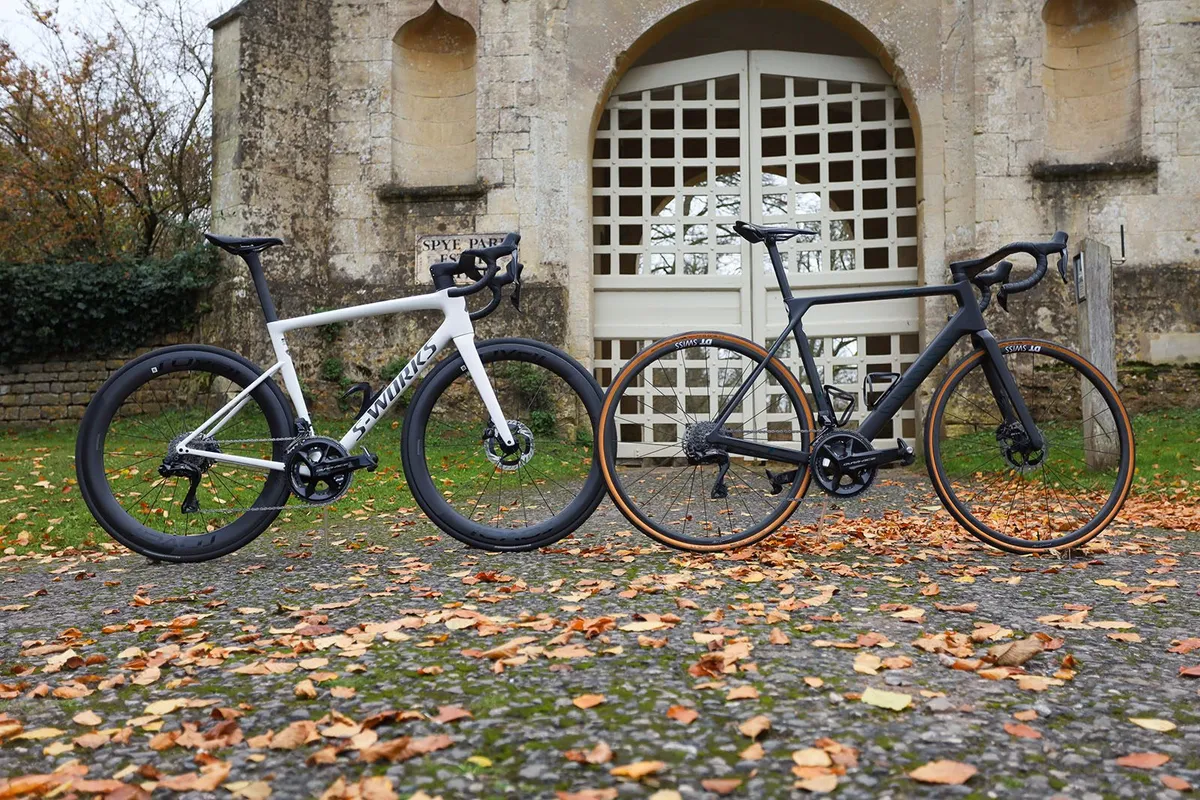
As specced here, both come with Shimano’s top-level Dura-Ace Di2 R9200 groupset, although both can also be had with SRAM Red eTap AXS drivetrains.
Canyon also makes one model of the Ultimate CFR with Campagnolo’s latest Super Record Wireless groupset.
For these specific bikes, there are two groupset differences to note: the Tarmac has a 4iiii Precision Pro dual-sided power meter, while this Ultimate is normally specced with a Shimano Dura-Ace power meter.
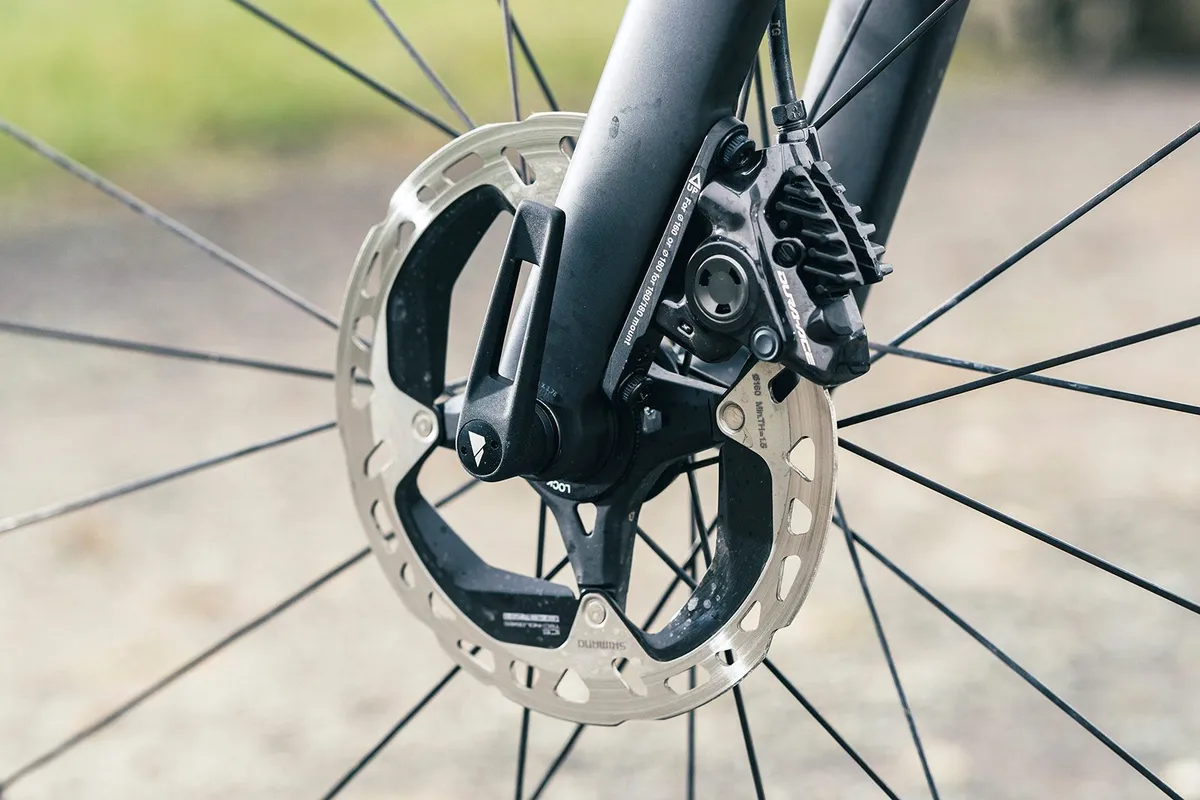
This specific example of the Ultimate CFR doesn’t have the latest Dura-Ace spec CL900 rotors fitted here, because the bike in question was built before those were available.
A glance at Canyon’s latest range reveals this to be a rolling change, though – the latterly revealed Canyon Ultimate CFR Aero bike has them.
This Ultimate CFR build has DT Swiss 1100 PRC Dicut Mon Chasseral wheels, which weigh in at 1,266g. As well as being shallow, the weight certainly makes this a more climbing-oriented specification.
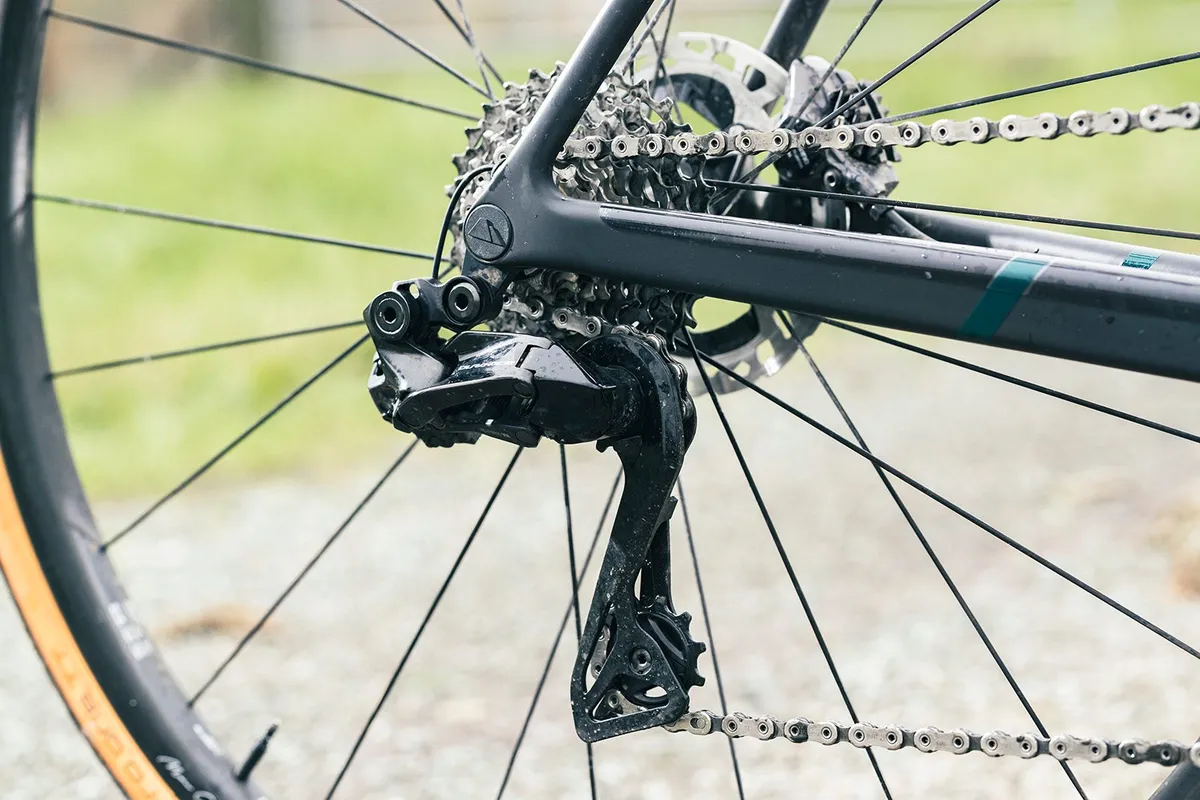
The tyres are the very lightweight and racy Schwalbe Pro One TT model, 700x25c all-round.
It’s unusual to see such racy tyres on a stock build such as this, when brands usually cater for the real-world requirements of customers.
The Selle Italia C59 saddle is as pared-back as they come, too, although it’s well-shaped and has suited me well when I’ve used it.
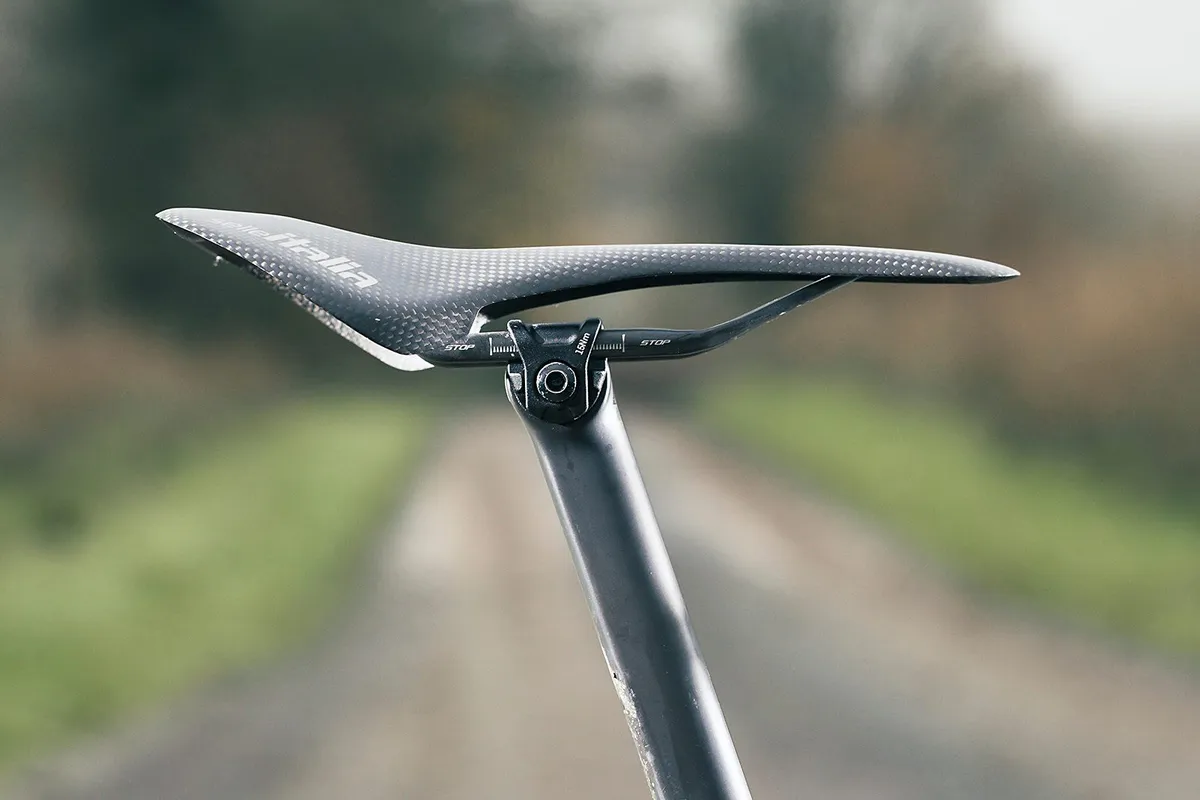
If nothing else, it demonstrates shape and support are arguably the more important elements of road bike saddle design, while remaining highly subjective.
The rest of the build comes from Canyon, with a new inline D-shape carbon seatpost the pick of the changes.
It’s worth noting that this can’t be swapped out at point of purchase – Canyon currently assumes customers of the CFR are more likely to get on with the inline version of the seatpost, while those shopping at the SLX and SL level are offered the setback post.
And, while the Aerocockpit offers built-in width adjustment (400-440mm centre-to-centre on a size-large bike), your stem length is fixed unless you buy a replacement. Because it’s proprietary, it can’t be switched for another bar/stem.
Canyon Ultimate CFR specifications
- Weight: 6.3kg (L)
- Sizes: 2XS, XS, S, M, L, XL, 2XL
- Frame: Canyon Ultimate CFR
- Fork: Canyon Ultimate CFR
- Cranks: Shimano Dura-Ace R9200 52/36t 12×2
- Cassette: Shimano Dura-Ace R9200 12×2, 11-30t
- Chain: Shimano Dura-Ace 12-speed
- Shifters: Shimano Dura-Ace Di2 R9270
- Rear derailleur: Shimano Dura-Ace Di2 R9270 12×2
- Brakes: Shimano Dura-Ace R9270 hydraulic disc
- Seatpost: Canyon SP0064 (zero setback / inline)
- Cockpit: Canyon CP0018 Aerocockpit
- Wheels: DT Swiss PRC 1100 Mon Chasseral
- Tyres: Schwalbe Pro One TT, tubeless-ready (set up clincher), 25mm front / 28mm rear
- Saddle: Selle Italia C59 Carbon
- Price: £10,399 / $10,900 / €10,499 / AU$15,349
The Tarmac, on the other hand, comes with parts exclusively from the Specialized family.
On top of the Rapide cockpit, components brand Roval provides its top-spec aero wheelset – the Rapide CLX II. This has a wider, shallower profile up front and a deeper, narrower shape at the rear.
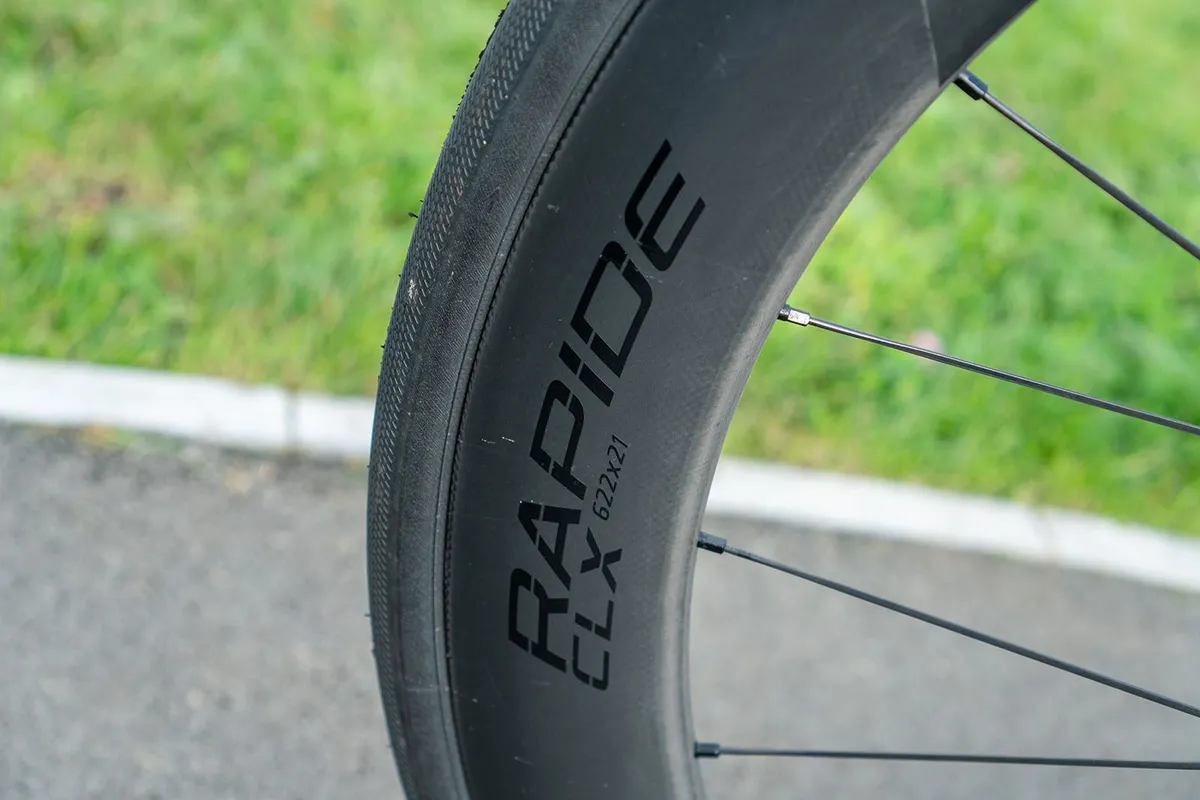
We’ve tested both the Rapide CLX II and CL II wheelsets, which have identical rims, and they have impressed.
Specialized specs 700x26c S-Works Turbo Rapidair 2BR tubeless-ready tyres.
The narrow seatpost is bespoke to the Tarmac and is notably narrow for aerodynamic gain. A 15mm-offset post is specced as standard, with an inline post available separately.
Specialized doesn't offer a guarantee of component swaps at point of purchase, but claims it doesn't stop its dealers from doing so, should they be able.

Both of these bikes are expensive by any measure, but at £12,000 / $14,000 / €14,000 / AU$19,900, the S-Works Tarmac SL8 is a clear £2,500 more expensive in the UK, and an even more significant $4,500 more expensive in the US.
This is a price gap that’s hard to reconcile, despite the differences between the two, and leaves plenty of purchasing room for a second wheelset should one opt for the Ultimate CFR.
Specialized S-Works Tarmac SL8
- Weight: 6.76kg (size 56cm)
- Sizes: 44, 49, 52, 54, 56, 58, 61cm
- Frame: S-Works Tarmac SL8, Fact 12r carbon
- Fork: S-Works Tarmac SL8, Fact 12r carbon
- Shifters: Shimano Dura-Ace Di2 R9200
- Rear derailleur: Shimano Dura-Ace Di2 R9200 12×2
- Cranks: Shimano Dura-Ace Di2 R9200 52/36T 12×2
- Power meter: Yes, 4iiii Power Precision Pro
- Cassette: Shimano Dura-Ace Di2 R9200 12×2, 11-30t
- Chain: Shimano CN-M9100 XTR/Dura-Ace 12-speed
- Brakes: Shimano Dura-Ace Di2 R9200 hydraulic disc
- Cockpit: Roval Rapide, carbon, 40cm bar, 110mm stem
- Seatpost: Specialized Tarmac SL8, carbon, 15mm setback
- Saddle: Specialized Body Geometry S-Works Power
- Wheels: Roval Rapide CLX II
- Tyres: Specialized S-Works Turbo 2BR, 700 x 26c, with tubes
- Price: £12,000 / $14,000 / €14,000 / AU$19,900
Specialized S-Works Tarmac SL8 vs Canyon Ultimate CFR ride comparisons
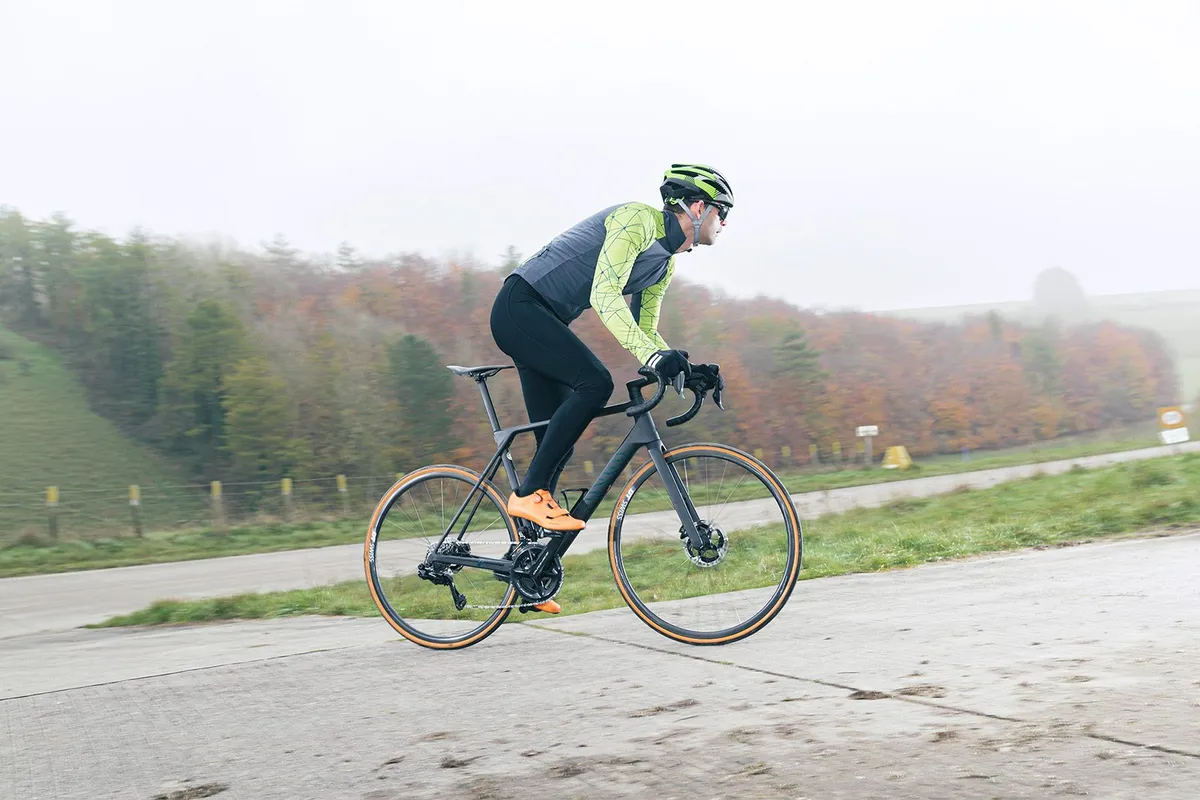
So, how do these two bikes compare on the road?
Both bikes bring enviable handling qualities and ride confidence. The Specialized has a slightly more aggressive ride position, which means the Ultimate could be the better bet if you find that kind of thing uncomfortable.
However, the racier position could be just the ticket if you want a no-holds-barred race bike with a keen eye on aero performance.
That said, both deliver sharp handling without feeling nervous.
Responses are predictable and both produce feedback that breeds all-important confidence in the overall ride.

Both have the stiffness to lap up hard efforts, and neither gives any sense of excess flex.
Each bike gives the ability to carve a confident line on a descent too.
That said, there’s no doubt the S-Works Tarmac SL8 feels like the faster bike of the two when the road is flat.
It’s impossible to corroborate this in black and white without a wind tunnel or controlled conditions, but the more pronounced aero tube shapes could be delivering some benefit to overall speed.
The wheel choices are probably having even more of an impact here, though. I’ve also ridden the Ultimate CFR with comparably deep rims to the Rovals, plus an Ultimate SLX with similar wheels, and this significantly closes the gap.
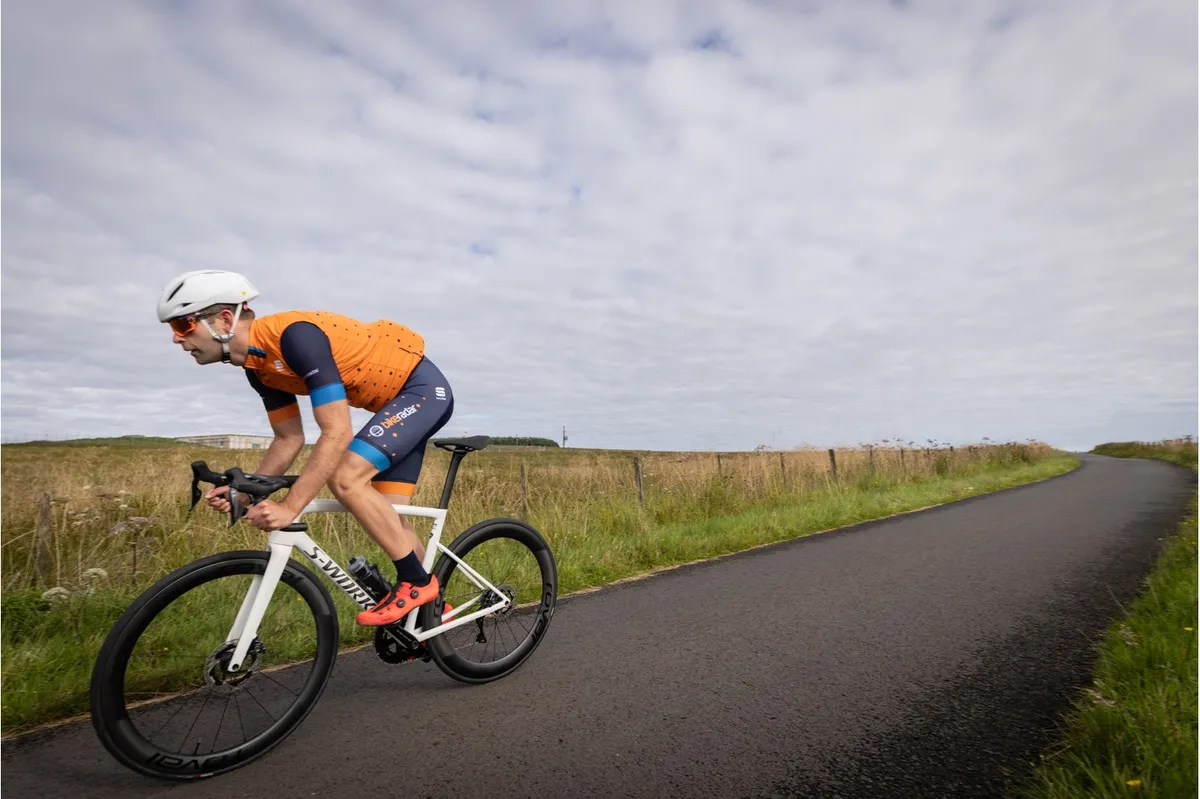
When you climb a long, shallow gradient, the Tarmac is still probably the faster of the two, but the climbing-specific wheels on the Ultimate CFR really come into their own when things get steep. They whip around with ease when out of the saddle, and the sense of acceleration is high.
Another benefit to the shallower rim is the wheels feel more stable if you're riding in stronger winds. If you’re a lighter rider who’s not used to deeper aero wheels, or know your bike handling skills could use work, this might be something to consider.
For many people, there’s a balance to be struck between the aero performance you’ll get from deeper rims and the stability to be had from shallow ones.
However, it’s worth remembering there’s a more aero-oriented build available for the Ultimate CFR in the UK and EU, priced exactly the same.
With the S-Works Tarmac SL8, aside from opting between Shimano or SRAM drivetrains, you’ll be ‘stuck’ with the Rapide CLX II wheels.
This is no hardship, but it's worth noting if a shallower wheelset is your preference.

Overall, both bikes tackle road buzz well and are comfortable to ride (considering general race bike compliance levels), although I don’t think the narrow tyre choices make the most of the bikes’ potential in this regard.
The 25mm Schwalbe Pro One TT tyres on the Canyon are great for a perfect day in the Alps, but aren’t wide or sturdy enough for the kind of road surfaces the vast majority of us will expose them to.
The same story is true of the 26mm S-Works tyres on the Specialized, albeit they’re a little more well-rounded in their construction.
I’d look to both upgrade to 700x28c tyres – my pick would be something such as a Continental Grand Prix 5000 S TR, Pirelli P Zero Race TLR or Goodyear Eagle F1 R – and take the benefits of increased tyre volume over any small aero or rolling resistance gains you might be getting from the stock tyres.
Specialized S-Works Tarmac SL8 vs Canyon Ultimate CFR bottom line
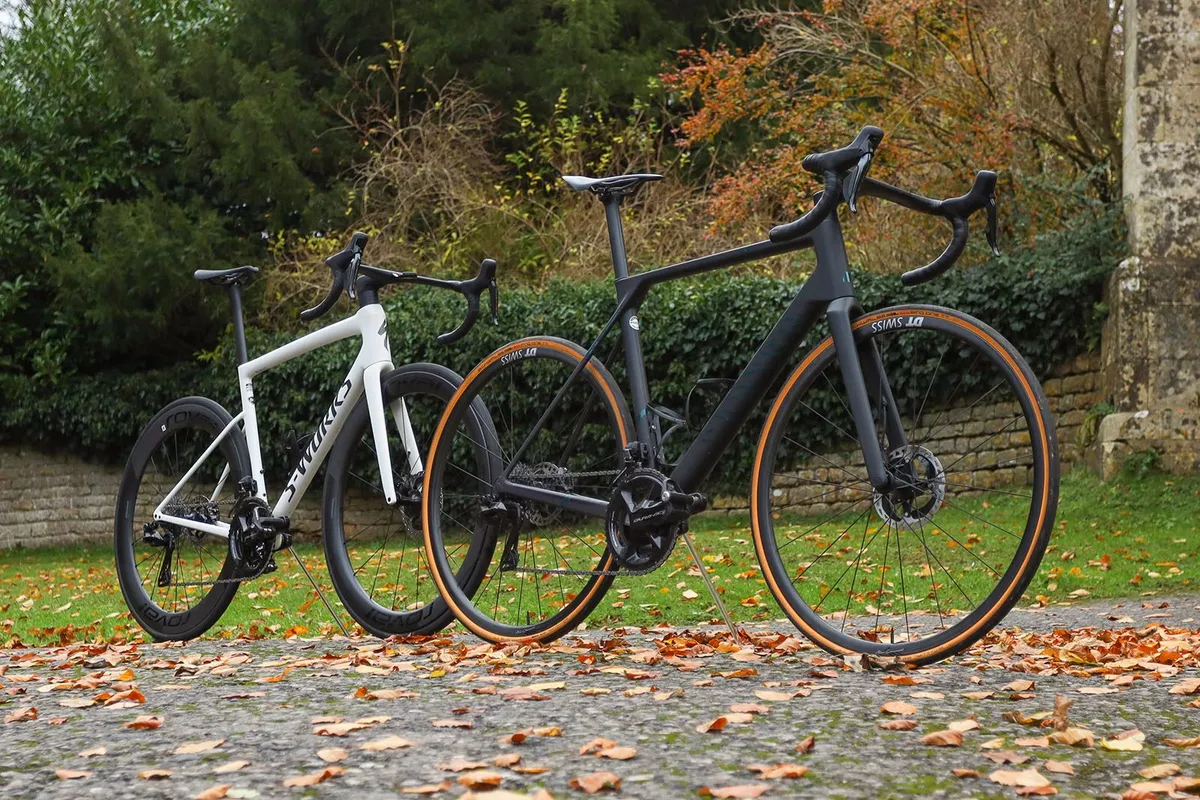
So, which bike is best?
As with most bike-buying decisions, much comes down to the kind of riding you do, how well it fits you and your budget.
In these builds, I think the Specialized S-Works Tarmac SL8 is certainly the more race-ready and rounded of the two, and probably the faster overall. For some, this is the most important thing, and that’s fine.
Having said that, this Ultimate CFR build can bite back with outstanding climbing prowess on steeper ascents, while the slightly more accommodating ride position should be acknowledged.
Plus, it’s significantly cheaper, and it’s also worth bearing in mind that (in the UK and EU, at least) there’s an option of an equivalent spec, just with a deeper wheelset, at the same price.
At the time of writing, if you live in the US and have the budget for an S-Works Tarmac SL8 but think an Ultimate CFR is a better fit for you, there’s nothing to stop you from buying an Ultimate, plus a more aerodynamic wheelset.
I think the S-Works Tarmac SL8 is the purer racer and perhaps the marginally faster bike, but the Ultimate CFR is a better-value deal.
undefinedundefinedundefinedundefinedundefinedundefinedundefinedundefinedundefinedundefinedundefinedundefinedundefinedundefinedundefinedundefinedundefinedundefinedundefinedundefinedundefinedundefinedundefinedundefinedundefinedundefinedundefinedundefinedundefinedundefinedundefinedundefinedundefinedundefinedundefinedundefinedundefinedundefinedundefinedundefinedundefinedundefinedundefinedundefinedundefinedundefinedundefinedundefinedundefinedundefinedundefinedundefinedundefinedundefinedundefinedundefinedundefinedundefinedundefinedundefinedundefinedundefinedundefinedundefinedundefinedundefinedundefinedundefinedundefinedundefinedundefinedundefinedundefinedundefinedundefinedundefinedundefinedundefinedundefinedundefinedundefinedundefinedundefinedundefinedundefinedundefinedundefinedundefinedundefinedundefinedundefinedundefinedundefinedundefinedundefinedundefinedundefinedundefinedundefined